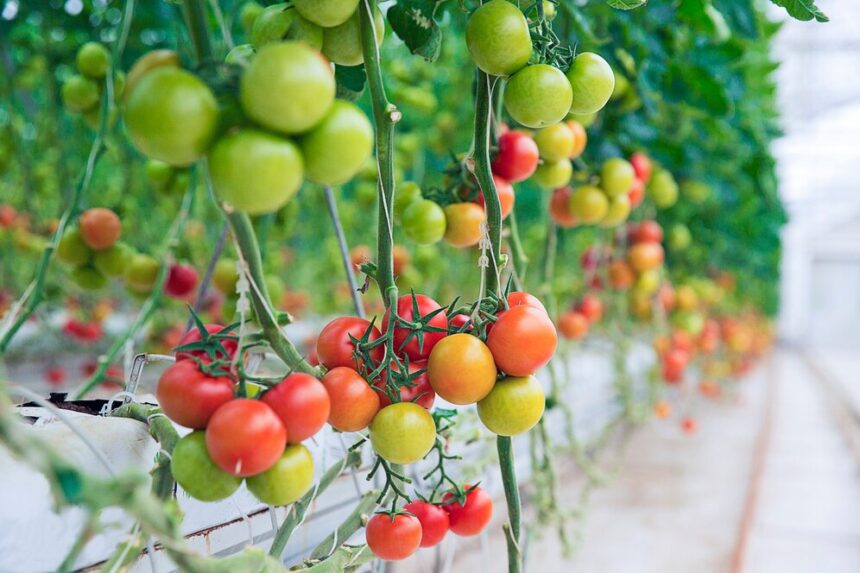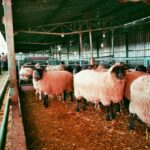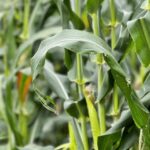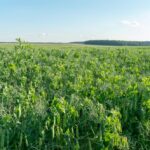Starting a farming venture can be both an exciting and daunting experience, especially for first-time farmers. In South Africa, with its diverse climate and agricultural landscapes, there are numerous crop options to choose from. However, it’s essential to select crops that are suitable for your farm’s specific conditions, relatively easy to grow, and financially viable. For first-time farmers, it’s crucial to balance productivity with manageability, ensuring that the crop selection aligns with your farming goals and available resources. Below are some of the best crops for first-time farmers in South Africa, which require relatively low investment, provide good yields, and are easier to manage.
1. Maize (Corn)
Maize is a staple crop in South Africa and one of the most widely grown crops in the country. It is highly adaptable to various climatic conditions, with different varieties suited to both warm, dry regions and more temperate zones. Maize is a great choice for first-time farmers because it is well-established in South African agriculture, and there is a strong market demand, both locally and internationally.
- Why it’s good for beginners: Maize has straightforward planting and growing requirements. It requires well-drained soil and regular rainfall or irrigation. Additionally, maize is a relatively hardy crop, with pests and diseases being manageable with proper crop management.
- Key considerations: To ensure success, it’s important to plant maize in soils with a pH level of 5.8 to 7.0, and avoid planting it in overly wet or poorly drained soil.
2. Tomatoes
Tomatoes are one of the most popular and profitable crops for smallholder farmers in South Africa. They grow well in various regions, including both subtropical and temperate climates, and offer a high return on investment. Tomatoes are consumed in many forms—fresh, canned, or processed—which means there’s a steady demand in both domestic and international markets.
- Why it’s good for beginners: Tomatoes are relatively easy to grow, and they don’t require a large initial investment to start. They have a fast growth cycle, allowing farmers to harvest within a few months of planting. Furthermore, they can be grown in greenhouses or open fields, depending on the resources available.
- Key considerations: Tomatoes require consistent watering and well-drained, fertile soil. They are sensitive to temperature fluctuations, so it’s important to ensure that they don’t experience extreme heat or frost. Regular pest control and monitoring for diseases like blight are essential.
3. Cabbages
Cabbages are another great option for first-time farmers in South Africa. They grow well in the cooler areas of the country, making them perfect for regions with mild to temperate climates. Cabbages are in constant demand, both fresh and for processing into products like sauerkraut, pickles, and soups.
- Why it’s good for beginners: Cabbages are easy to cultivate and require minimal input in terms of fertilizer and water once they are established. They have a relatively short growing period, and they can be harvested in around three to four months.
- Key considerations: Cabbages need fertile, well-drained soil and a consistent supply of moisture. Farmers must be vigilant about pests like aphids, caterpillars, and snails, which can damage the crop.
4. Spinach
Spinach is a quick-growing leafy green that’s both nutritious and in high demand in local markets. It thrives in cooler climates but can also grow well in warmer areas with adequate water and care. Spinach is relatively easy to grow and is a popular crop for first-time farmers looking for short-term returns.
- Why it’s good for beginners: Spinach has a fast growing cycle, often ready for harvest within 6 to 8 weeks after planting. It can be grown in small areas, making it an ideal crop for farmers with limited land.
- Key considerations: Spinach grows best in well-drained, loamy soil and requires regular watering. It is sensitive to high temperatures, so it’s important to plant it during the cooler months or in shaded areas during the hot season.
5. Peppers (Bell and Hot Peppers)
Peppers are highly versatile and can be grown in a wide range of climates across South Africa. They are an excellent option for first-time farmers because they have a relatively easy growth cycle and are in demand for both fresh consumption and processing. Bell peppers and hot peppers are popular crops that are grown for both domestic and export markets.
- Why it’s good for beginners: Peppers are relatively easy to grow, and they don’t require complex management practices. They can be grown in small spaces and produce high yields in a relatively short time.
- Key considerations: Peppers require well-drained, fertile soil and benefit from warm weather. They should be planted in areas that receive plenty of sunlight and must be watered regularly, especially during the flowering and fruiting stages. Pest control is essential, especially for diseases like powdery mildew.
6. Carrots
Carrots are a hardy root crop that can be grown across most regions of South Africa. They are highly nutritious and versatile, with demand from both local and international markets. Carrots have a relatively simple growing process and can be harvested after about 3 to 4 months.
- Why it’s good for beginners: Carrots don’t require complex soil amendments and grow well in loamy, well-drained soil. They are easy to plant, and once they have established roots, they require minimal maintenance.
- Key considerations: Carrots need regular watering to prevent the soil from drying out, especially during the germination phase. Thinning is important to ensure that they grow to the right size, and care should be taken to avoid soil compaction, which can affect root development.
7. Lettuce
Lettuce is another crop that is well-suited to South African farming conditions, particularly in cooler regions. It is in high demand in the fresh vegetable market, and its fast growth cycle makes it ideal for farmers seeking quick returns on investment.
- Why it’s good for beginners: Lettuce grows quickly, often maturing in as little as 6 to 8 weeks, and it requires minimal input. It is easy to manage, and its relatively low maintenance makes it a great crop for new farmers.
- Key considerations: Lettuce prefers cooler weather and requires consistent moisture to avoid bolting (premature flowering). It also benefits from being grown in fertile, well-drained soil. Pests like aphids and snails can be problematic, so regular monitoring is necessary.
8. Herbs (Basil, Rosemary, and Thyme)
Herbs are a great option for small-scale, first-time farmers who want to diversify their crop production. Herbs like basil, rosemary, thyme, and parsley are in high demand both in the fresh and dried forms, offering a lucrative market opportunity. They can be grown in smaller areas and have relatively simple growing requirements.
- Why it’s good for beginners: Herbs are easy to grow and require little space, making them ideal for small-scale farming. They also have a short growth cycle and can be harvested multiple times per year, offering quick returns.
- Key considerations: Herbs typically thrive in well-drained, slightly alkaline soil and require regular watering, especially in hot climates. They need adequate sunlight and are generally hardy once established. Pests are usually minimal, but it’s important to prevent overwatering, which can lead to root rot.
For first-time farmers in South Africa, selecting the right crops to grow can make the difference between success and failure. Crops like maize, tomatoes, cabbage, spinach, peppers, carrots, lettuce, and herbs offer relatively low investment and high returns, making them ideal for beginners. However, it’s crucial to take into account your farm’s specific conditions, including climate, soil type, and water availability. By choosing the right crops and carefully managing resources, first-time farmers can enjoy successful and profitable farming ventures while contributing to South Africa’s dynamic agricultural industry.
Join 'Farmers Mag' WhatsApp Channel
Get the latest Farming news and tips delivered straight to your WhatsApp
CLICK HERE TO JOIN






